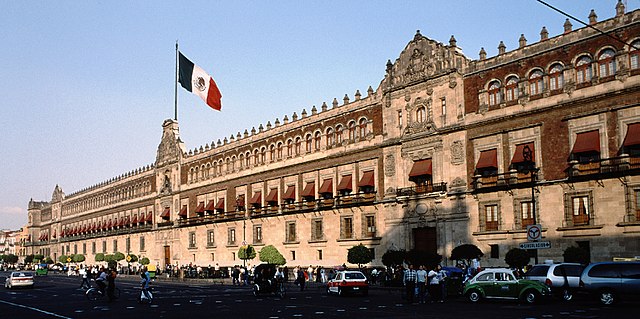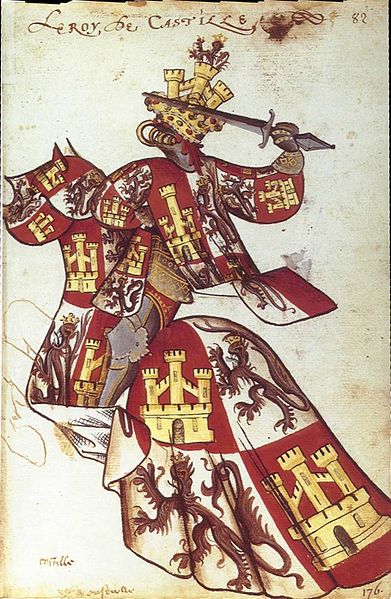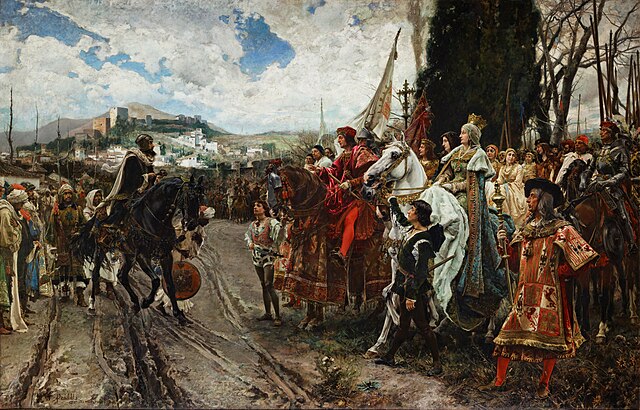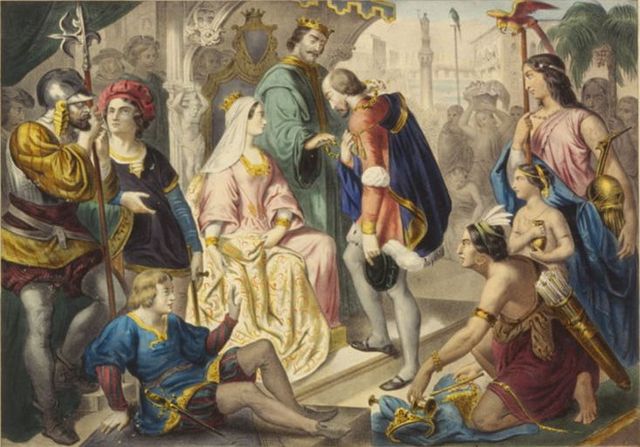A Real Audience, or simply an Audience, was an appellate court in Spain and its empire. The name of the institution literally translates as Royal Audience. The additional designation chancillería was applied to the appellate courts in early modern Spain. Each audiencia had oidores.
Members of the Real Audiencia of Lima, the presidente, alcaldes de corte, fiscal and alguacil mayor. (Nueva Crónica y Buen Gobierno, p. 488)
Former Viceregal Palace and seat of the Audiencia of Mexico, since independence in 1821, the National Palace.
The Crown of Castile was a medieval polity in the Iberian Peninsula that formed in 1230 as a result of the third and definitive union of the crowns and, some decades later, the parliaments of the kingdoms of Castile and León upon the accession of the then Castilian king, Ferdinand III, to the vacant Leonese throne. It continued to exist as a separate entity after the personal union in 1469 of the crowns of Castile and Aragon with the marriage of the Catholic Monarchs up to the promulgation of the Nueva Planta decrees by Philip V in 1715.
Equestrian heraldic of King John II of Castile in the Equestrian armorial of the Golden Fleece 1433–1435. Collection Bibliothèque de l'Arsenal.
The Surrender of Granada (Francisco Padilla, oil on canvas, 1882)
Columbus and the Catholic Monarchs (The return of Columbus)
"The Comuneros Padilla, Bravo and Maldonado in the Patíbulo", by Antonio Gisbert, 1860.






